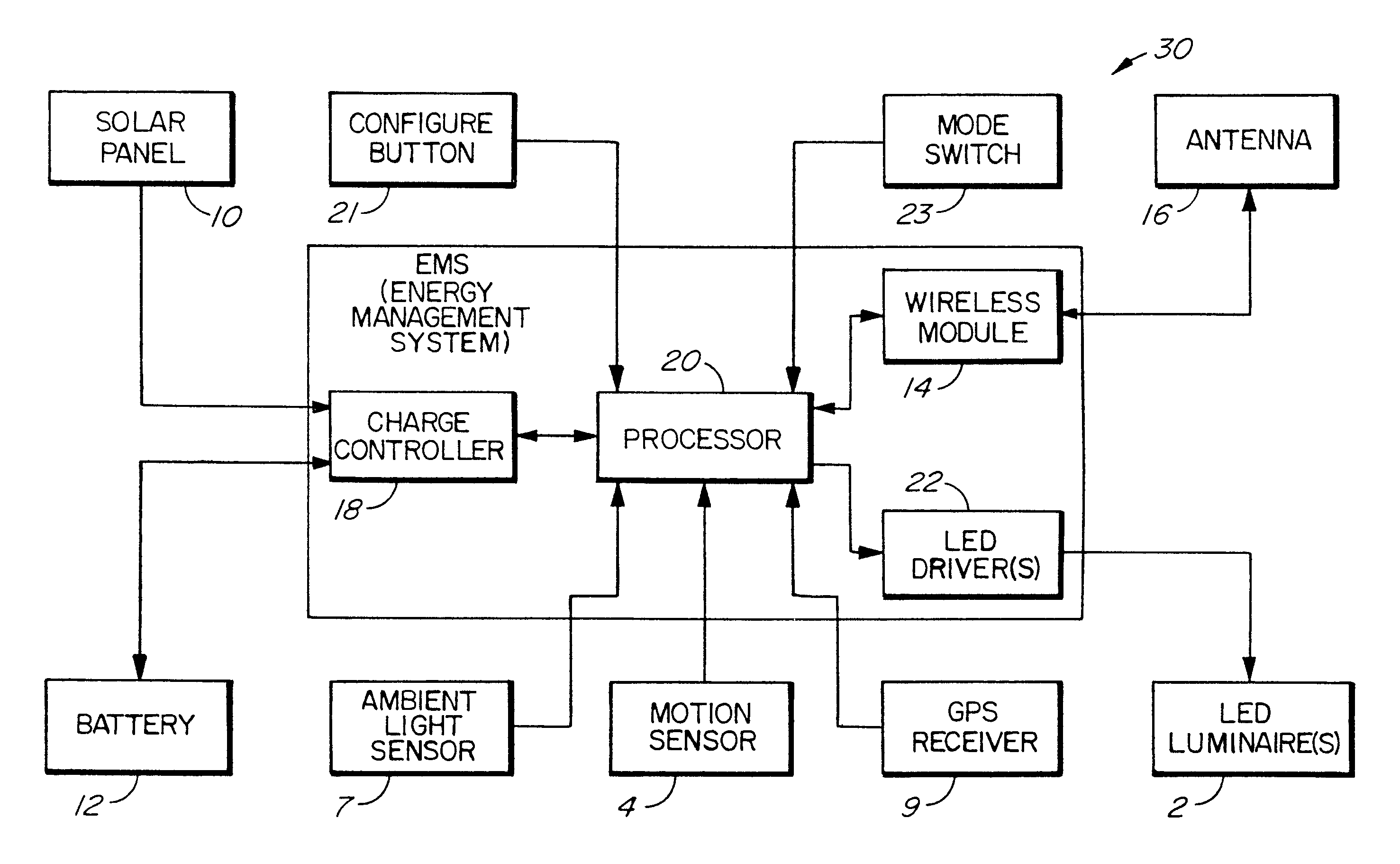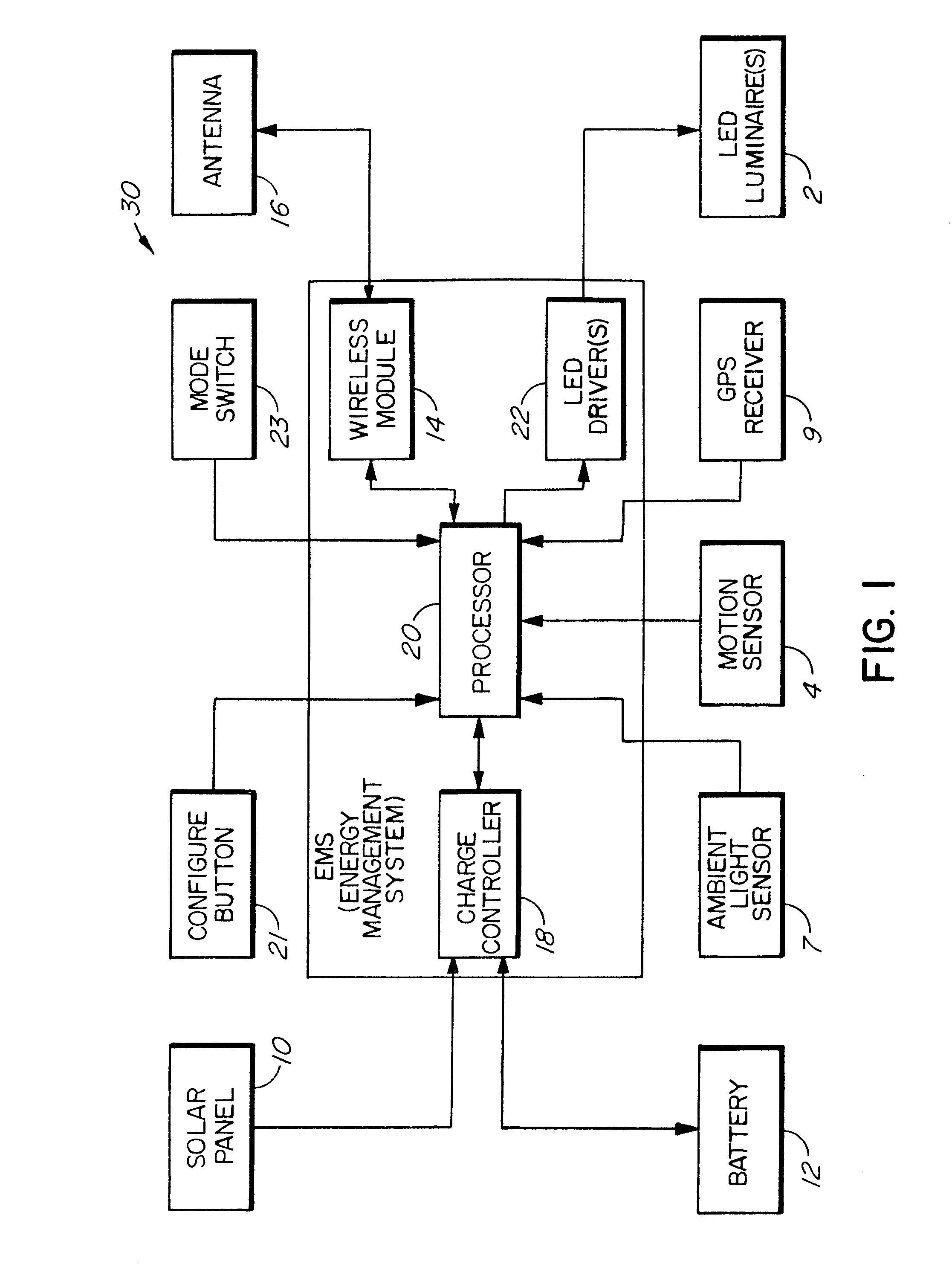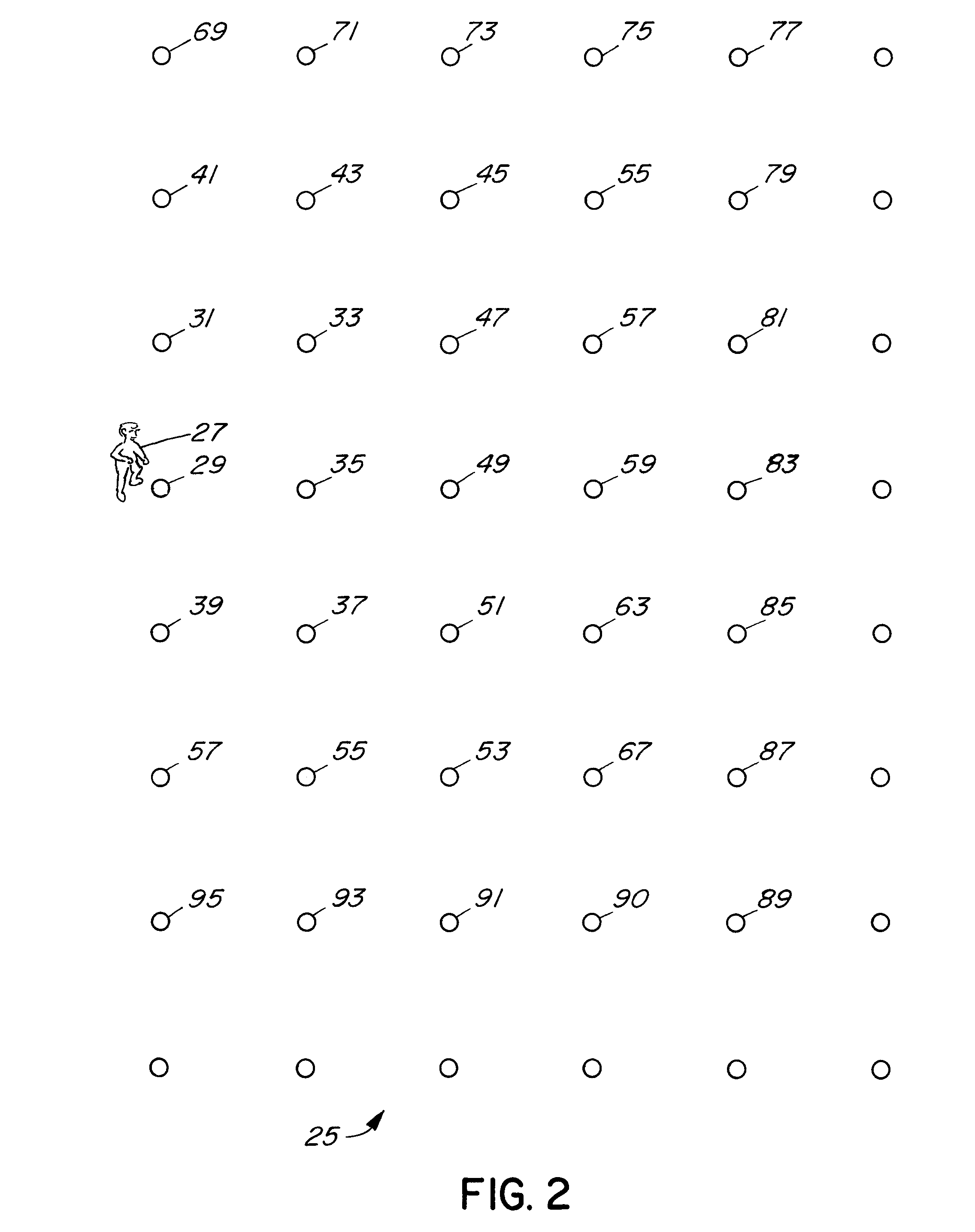Intelligent area lighting system
a technology of intelligent lighting and intelligent area, applied in the direction of electric variable regulation, process and machine control, instruments, etc., can solve the problems of insufficient sunlight available to charge solar-powered systems, inconvenient installation, and insufficient lighting for an extended period of time, so as to achieve less stress and more pleasant illumination
- Summary
- Abstract
- Description
- Claims
- Application Information
AI Technical Summary
Benefits of technology
Problems solved by technology
Method used
Image
Examples
Embodiment Construction
[0038]The basic building block according to the preferred embodiment of the invention is a lighting element 30, whose components are illustrated in the block diagram is of FIG. 1. It is to be understood that in use, a plurality of such lighting elements 30 are deployed in an area to be lighted.
[0039]Lighting element 30 comprises a collection of components enabling the functionality of the invention. In the preferred embodiment, the components are mounted on or within a pole (see FIG. 3), although it is within the scope of the invention to provide a ground-based lighting element that is adapted to rest on the ground or to be anchored in place on the ground. Ground-based lighting is often more appropriate and introduces less light pollution into the environment. It will be appreciated that a combination of pole-mounted and ground-based lighting elements 30 may seamlessly be combined in a lighting network as no aspect of the invention depends on the physical housing of the lighting ele...
PUM
 Login to View More
Login to View More Abstract
Description
Claims
Application Information
 Login to View More
Login to View More - R&D
- Intellectual Property
- Life Sciences
- Materials
- Tech Scout
- Unparalleled Data Quality
- Higher Quality Content
- 60% Fewer Hallucinations
Browse by: Latest US Patents, China's latest patents, Technical Efficacy Thesaurus, Application Domain, Technology Topic, Popular Technical Reports.
© 2025 PatSnap. All rights reserved.Legal|Privacy policy|Modern Slavery Act Transparency Statement|Sitemap|About US| Contact US: help@patsnap.com



